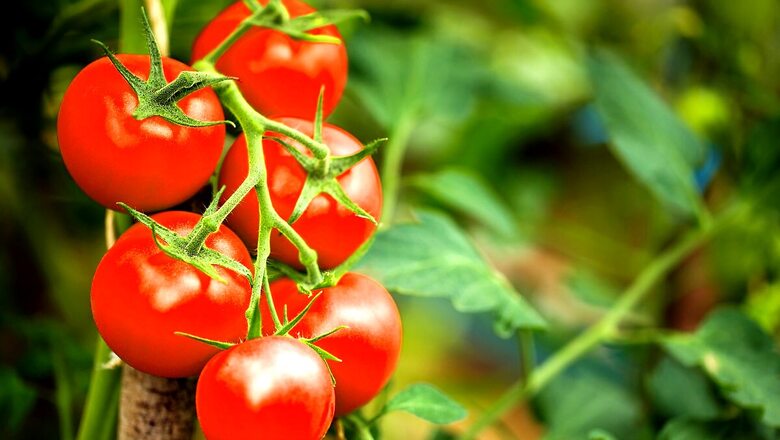
views
It seems like every Indian recipe starts with sweating onions in ghee or oil and whole spices, adding ginger garlic paste and then waiting patiently till they all turn brown, so that you can then add heaps of chopped tomato along with red chilli powder and turmeric, to make a thick dark brown paste which is slowly sautéed till the oil separates. This paste can then become the base for everything, from meat to lentil, to vegetable, to dairy with the addition of some flavour-maker or the other. In fact for a Bhuna Gosht, there is not much more you need to add to the paste except the mutton. For making Rajma, the paste is perfect if browned a bit sparingly; you add boiled yellow daal and you could have a nice masala daal, and so on and so forth.
Malvani Chicken That Tasted Like Bhuna Gosht
What set me off one day was a peek into the kitchen of a small local Malvani restaurant. I had just assumed that smaller the restaurant, the more home-grown it would be. It seemed a good measure to go by, considering it is often mass production that results in compromises and adaptations.
The dish being prepared was an eponymous Malvani Chicken Masala. Much to my disappointment, the chicken had already been marinated in turmeric, boiled and kept ready to cook. I forgive that grudgingly, only because in a restaurant, time is of essence. But let me quickly get back to the cooking of the Malvani Chicken Masala. Now after years of having a ringside view of Malvani and Saraswat cooking, I know what it takes. It takes coconut, it takes roasting of masalas, and it takes grinding. Not here.
ALSO READ | What The Fork: Kunal Vijayakar on the Food That Helped Him Survive the Lockdown
The frying pan in this kitchen was suddenly ablaze with oil, and the cook chucked in some dark reddish brown paste into the fire. It was the onion tomato paste that had been made and kept ready. After that, nothing. Just a spoonful of Malvani readymade masala powder that had come out of bottle, procured from some so-called authentic source, and water, to which boiled chicken was added. No coconut, no roasting, no toasting, just slap, dash, serve. I tasted it. The spice mix powder did add some Malvani personality to the dish and I suspect it contained some dry coconut as well, but for me the tomato just ruined the dish. It was like a Punjabi Bhuna Gosht with the wrong masalas. That got me thinking. What is really the role of tomato in Indian cooking? Is it native to us and does it have a significant place in our food?
How Indians Came to Embrace Tomato
There is enough proof that in ancient Harappa, which is about 8,000 years ago, rice, barley, wheat, oat, jowar, sesame, mustard, chickpeas, masoor, moong were staple along with dates, pomegranates, and possibly bananas. Even the Rig Veda describes the ancient use of rice, cereals and pulses like urad, moong and masoor. You can find references of spinach, melons, pumpkin, cucumber, bottle gourd, water chestnut, bitter gourd, radish and brinjal. Even mangoes, oranges and grapes. Spices such as coriander, turmeric, pepper, cumin, asafoetida, cloves, sesame and mustard were well known. But no tomatoes. And no onions.
The other day, I was having this rather interesting conversation with a friend about Fried Fish and Tartar Sauce. Tartar sauce, as French as it can get, is basically mayonnaise with lemon juice and a few herbs. In an old Goan-Portuguese restaurant, along with fried fish, he was served Tartar sauce with chopped tomatoes. And he lost his head. It was only after a bit of calming down and pacific consideration that we came to the conclusion that maybe it’s the Mediterranean habits of the Portuguese that made the chef take this culinary leap. After all, the tomato grown all over the Mediterranean and so loved by the Portuguese was most probably brought to India (along with cashew nuts and chillies), soon after Portuguese explorer Vasco da Gama discovered a sea route to Calicut in 1498 and Portugal took control of Indian spice routes to Europe.
In true Indian fashion, we embraced this “imported maal” wholeheartedly and tomato, onion, and chilly slowly but surely became a part of Indian cuisine.
ALSO READ | What The Fork: Who Invented Chicken Manchurian, Indians or Chinese? Kunal Vijayakar Has the Answer
So what do we use tomato for? Basically, it is a souring agent in food. Native to our cuisines are souring agents like kokum, tamarind and raw mango, which add distinction and regional character to our curries and vegetables. In my opinion, most of India still uses traditional ingredients but it is our restaurants, especially North Indian restaurants, who purpose tomato to add flavour and thickness to their food and have made a bad habit of it. Kashmir uses no onion or tomato generally, same for Mughlai food, which depends on dahi or curd as a souring agent and gravy maker. Food cooked for religious occasions like “shraadhs” prefer raw mangoes and raw bananas, banana flower and stem, beans, sweet potatoes, taro roots spiced just with pepper instead of chillies.
But as exasperated as I may get with the excessive use of tomato in Indian restaurant cuisine, I cannot imagine Indian food without Butter Chicken, Rasam and Bhuna Gosht, all of which without tomatoes would not only be different, but would be a shame.
Read all the Latest News, Breaking News and Coronavirus News here.




















Comments
0 comment